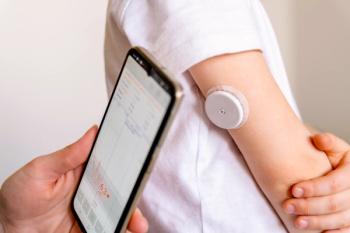
Adalimumab Biosimilar Shows Efficacy in Noninfectious Uveitis
Switching from adalimumab originator to SB5 did not cause clinically significant differences in treatment efficacy and safety for patients with noninfectious uveitis.
Uveitis is a condition involving the inflammation of the uveal tissues of the eye, including the iris, ciliary body, and choroid. This ocular disease can affect all age groups and often occurs in young adults. It can be associated with marked visual morbidity and impairment and ranks as the 5th or 6th leading cause of blindness in the developed world. Uveitis can be infectious or noninfectious; the latter can appear with systemic autoimmune disease and autoimmune diseases localized to the eye.1
Noninfectious uveitis (NIU) treatments include steroids, immunosuppressants, and biologics. Most biologic therapies for NIU target tumor necrosis factor-alpha (TNF-α). Adalimumab, a genetically engineered IgG1 monoclonal antibody with high binding affinity to TNF-α, has demonstrated safety and efficacy for the treatment of NIU.2
A group of investigators in South Korea conducted a retrospective study evaluating the efficacy and safety of adalimumab originator to SB5, an adalimumab biosimilar for the treatment of patients with NIU. The retrospective data analysis involved 15 patients (29 eyes) with NIU. The researchers switched these patients from adalimumab originator to SB5 with a follow up of 6 months or longer. The data included best-corrected visual acuity (BCVA, logMAR), intraocular pressure (IOP, mmHg), anterior changer (AC) cell grade, anterior vitreous (AV) cell grade, vitreous haze grade, central macular thickness (CMT, µm), and macular volume (MV, mm3) before switching and then at 2, 4, and 6 months after switching.2
Researchers observed no significant differences in BCVA, AC and AV cell grades, and vitreous haze grades at 2, 4, and 6 months post- compared with pre-switching, and no significant differences in CMS and MV at 2 and 6 months post-switch. Additionally, no recurrence of uveitis occurred as defined by AC cell grade, vitreous haze, or BCVA.2
Notably, 4 patients (27%) switched back to adalimumab originator after a mean of 9 weeks, attributed to discomfort during the injection (3 patients) and technical difficulty with the new injection device (1 patient). No other adverse events appeared after switching to SB5.2
This study concluded that switching from adalimumab originator to SB5 does not cause clinically significant differences in treatment efficacy and safety for patients with NIU.2
References
1. Joltikov KA, Lobo-Chan AM. Epidemiology and Risk Factors in Non-infectious Uveitis: A Systematic Review. Front Med (Lausanne). 2021;8:695904. Published 2021 Sep 10.
2. Song SH, Woo SJ. Efficacy and Safety of Switching from Adalimumab Originator to SB5, Adalimumab Biosimilar for Noninfectious Uveitis. Ocul Immunol Inflamm. Published online January 9, 2024.
Newsletter
Stay informed on drug updates, treatment guidelines, and pharmacy practice trends—subscribe to Pharmacy Times for weekly clinical insights.




















































































































































































































